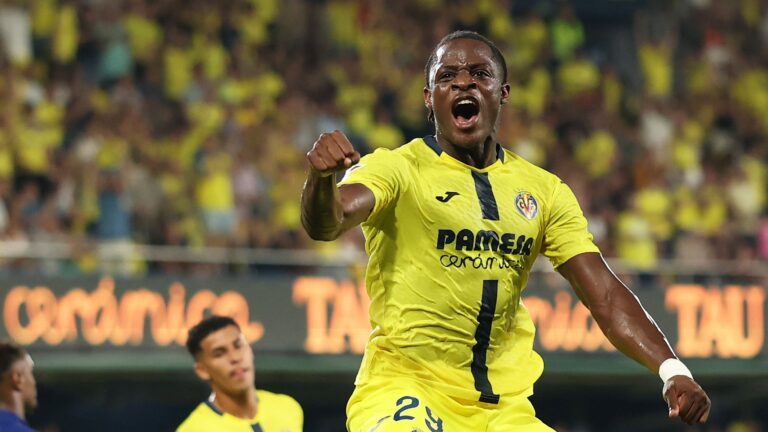Cesc Fabregas on Como’s Preference for Spanish Talent: Navigating Controversy in Serie A Recruitment
In the fast-paced realm of Serie A transfers, Cesc Fabregas, the former midfield maestro now leading Como, steadfastly supports the club’s lean towards Spanish players, even as it fuels arguments about developing homegrown talent. This method spotlights the dilemmas for clubs striving to merge competitive goals with fostering Italian youth, drawing attention to broader issues in talent management across European football.
- Fabregas challenges the intense examination of his hesitation to promote Italian talents
- The coach from Spain rationalizes Como’s targeted selections from his homeland
- The ex-player shows enthusiasm for nurturing up-and-coming Italian stars



Reasons for Como’s Emphasis on Spanish Recruits
Fabregas strongly endorses the club’s choice to favor Spanish additions over emerging Italian players, citing his intimate knowledge of the Spanish football landscape and the difficulties in finding budget-friendly Italian alternatives. This tactic mirrors a common practice in European leagues, where teams draw from familiar territories to rapidly form capable lineups.
Recent Additions and the Shortfall in Italian Prospects
During the latest transfer window, Como brought in 11 fresh faces, with only the 29-year-old Luca Mazzitelli from Frosinone as the Italian representative. On the flip side, standout signings such as Jesus Rodriguez, Alvaro Morata, and Alex Valle come from Spain, illustrating a deliberate international bent. This trend echoes warnings from Italy’s current coach about the limited opportunities for domestic players in Serie A, with data showing that just 25% of starting lineups now include Italians under 23, down from 30% the previous year, which points to an increasing dependence on outsiders.
Fabregas’s Rebuttal to the Critiques
Addressing accusations of ignoring Italian talent, Fabregas clarified that the issue stems from the challenges of uncovering affordable prospects with significant potential, not a lack of desire. He pointed out that elite Italian youth often gravitate to powerhouses like Inter or Juventus, putting clubs like Como at a disadvantage. “It’s a challenging environment for us and similar teams trying to advance,” he noted, highlighting that he and his staff diligently searched for Italian options to elevate squad depth, especially among the younger ranks, though elite choices remained unattainable.
Adjusting to Team Tactics
Incorporating Italian players into Como’s desired playing style has proven complex due to various cultural and developmental factors. Fabregas alluded to these without specifics on rivals, while underscoring initiatives to bolster the club’s youth initiatives, including funding for 15- to 16-year-olds in their junior program. “We’re expanding our horizons by channeling investments into shaping future stars our way,” he remarked, signaling a commitment to long-term solutions.
Trust in the Spanish Talent Pool and Long-Term Goals
Fabregas candidly acknowledged his superior understanding of the Spanish market, where he’s spotted ample opportunities in the players being signed. He portrayed Spanish athletes as especially dynamic at present, drawing parallels to how exports from La Liga are influencing leagues across Europe, similar to Morata’s potential boost to Como’s offensive line. Nonetheless, he reaffirmed his inclination towards Italian players, saying, “I’d always choose a homegrown talent if we could spot and refine one, but we’re currently leveraging what we’re most familiar with.” This candid view captures the trade-offs in player markets, where immediate team needs often outweigh future development, as evidenced by Serie A clubs allocating roughly 20% more funds to foreign signings this transfer period.
Future Prospects for Incorporating Italian Youth
Despite these hurdles, Fabregas is hopeful about gradually adding more Italian influences to the roster. He pictures a setup where Como not only seeks out but also develops talent from within, akin to how certain teams use their youth systems to forge success. “We’re dedicated to pursuing all options-be it intensified scouting or greater investments-to achieve this,” he stated. Following Como’s solid Serie A debut with a win over Lazio, the team is now preparing for Bologna, focused on sustaining their early form.
Exploring Como’s Player Acquisition Tactics
Within the vibrant landscape of Serie A, Como’s player acquisition tactics have ignited heated conversations, especially regarding its tilt towards Spanish players. As Como’s coach, Cesc Fabregas, the ex-Arsenal and Barcelona standout, leads the charge in justifying these decisions, which involve recruiting experienced Spanish internationals for their skill and dynamism, while raising questions about the marginalization of local Italian upstarts. Terms like “Cesc Fabregas Como recruitment” and “Spanish talent in Serie A” underscore the worldwide curiosity in how teams weigh tradition against modern approaches in squad construction.
Fabregas contends that this method isn’t about shutting out others but about gaining a competitive advantage. By weaving in Spanish players, Como seeks to add tactical flexibility and reliable performers, boosting the team’s effectiveness in crucial games. For example, the club’s latest acquisitions of players acquainted with Fabregas’s tactics demonstrate a calculated move to foster rapid team cohesion. It’s ultimately about pursuing excellence and versatility in building a roster.
The Value of Experience in Squad Development
A central component of Como’s approach is utilizing the expertise of Spanish players, who often have histories in premier leagues like La Liga. Pulling from his own storied past, Fabregas stresses that athletes with global experience can guide less seasoned teammates and fill skill gaps. This ongoing discussion of “Spanish talent versus young Italians” tends to miss how these combinations can create a more harmonious team environment, enhancing the league as a whole.
Observers point out that in the cutthroat world of Serie A, teams like Como are expanding their search internationally to find adaptable players. Fabregas has noted that this isn’t dismissing Italian options but responding to the expansive global talent available, allowing Como to position itself as an innovative force in recruitment strategies.
Examination of Como’s Lean Towards Spanish Players
The backlash against Como’s strategy arises from fears that it could stifle the advancement of young Italian athletes. Opponents claim that heavy dependence on foreign, especially Spanish, players might restrict chances for local stars, impacting the national team’s depth. Italian mediaើs amplified this debate, with talks on “Como’s recruitment strategy” emphasizing the importance of cultivating domestic talent for Italian football’s longevity.
Fabregas has tackled this directly in interviews, asserting that his choices are guided by ability, not origin. He maintains that in a performance-driven setup, the top performers deserve spots, irrespective of background. As an illustration, while Como has added Spanish players with La Liga credentials, Fabregas insists this fits into a wider plan that incorporates scouting Italian talents via academies and evaluations, promoting a fairer approach to acquiring players.
Effects on Aspiring Italian Athletes
For Italian youngsters aiming for Serie A spots, the influx of international players can seem overwhelming. Yet, Fabregas argues that interacting with elite foreign athletes offers valuable lessons, accelerating their progress. Research from recent campaigns indicates that squads with mixed backgrounds typically excel, proposing that cultural diversity can boost team durability and ingenuity.
Such issues aren’t exclusive to Como; they’ve surfaced in other European competitions. Fabregas’s stance highlights the need for strategic foresight, balancing immediate feedback with the potential gains for ongoing club performance.
Advantages of a Varied Player Acquisition Approach
Championing a varied player acquisition method, as Fabregas does, brings multiple benefits to football clubs. It brings in diverse playing techniques and ideas, helping teams adjust more easily in leagues like Serie A. Additionally, merging Spanish players with local ones can build a more enriching training atmosphere, facilitating natural knowledge sharing.
- Boosted Team Dynamics: Varied lineups frequently display greater innovation and decision-making during matches, evident in teams like Barcelona influenced by Fabregas.
- Cultural Integration: Athletes from varied origins offer fresh viewpoints, cultivating a supportive team environment that improves on-field collaboration.
- Sustained Stability: Avoiding a single nationality reduces vulnerabilities from injuries or slumps, guaranteeing stronger positional coverage.
These points explain why Fabregas regards his plan as a wise choice rather than a point of contention.
Examples from Effective Team-Building Strategies
Examining other clubs yields useful lessons on successful player acquisition. Take Manchester City’s tactics under Pep Guardiola, a colleague of Fabregas, which included recruiting from multiple countries to create a powerhouse. Likewise, AC Milan’s achievements stem from combining Italian prospects with global stars, echoing Como’s methods.
In Spain, teams like Athletic Bilbao stick to local players, offering advantages but potentially hampering flexibility. Fabregas defends Como’s balanced model as a potential template for Serie A clubs, demonstrating how deliberate strategies can drive wins and lasting competitiveness.
Insights from Fabregas’s Professional Path
Fabregas’s evolution from player to Como’s coach serves as a practical illustration. With experience at Spanish and English clubs, he appreciates the benefits of diverse backgrounds. His personal experiences show that welcoming a range of talents not only fortifies squads but also equips players for worldwide contests.
Actionable Advice for Clubs on Securing Talent
For teams dealing with similar critiques, here are practical suggestions to harmonize local and international recruitment:
- Perform Detailed Evaluations: Employ data tools to assess players via stats, focusing on skills rather than nationality for an unbiased selection.
- Support Youth Programs: Collaborate with regional academies to open routes for young Italians, while adding foreign players for targeted positions.
- Encourage Diversity: Build a club atmosphere that values inclusivity, like Fabregas, to reduce disputes and enhance team spirit.
- Assess Ongoing Effects: Monitor how recent signings influence group interactions and youth advancement, making adjustments accordingly.
Implementing these recommendations enables clubs to justify their decisions with solid evidence, similar to Fabregas’s approach for Como, paving the way for innovation and future triumphs in talent management.
Understanding the Controversy: Cesc Fàbregas and Como’s Recruitment Choices
The Background of Como’s Strategy Under Fàbregas
Cesc Fàbregas, the former Spanish football star turned manager, has been at the center of a heated debate regarding his role at Como, the Italian Serie A club. Since taking over, Fàbregas has implemented a recruitment strategy that’s drawn criticism for favoring Spanish talent over promising young Italian players. This approach has sparked discussions in football circles about balancing international expertise with local development in Italian football.
Fàbregas, known for his stellar playing career at clubs like Arsenal, Barcelona, and Chelsea, brought his vision to Como with the aim of rebuilding the team. His strategy emphasizes bringing in experienced Spanish players who align with his tactical philosophy, which includes high pressing and quick passing. Critics argue this preference overlooks Italy’s wealth of young talent, potentially hindering the growth of homegrown stars in Serie A.
Why Fàbregas is Defending His Approach
In recent interviews, Fàbregas has firmly defended Como’s recruitment decisions, stressing that his choices are driven by the need for immediate team success and long-term stability. He points out that Spanish players often share a similar footballing DNA to his own style, making integration smoother and faster. For instance, Fàbregas has highlighted signings like those from La Liga as key to injecting experience and winning mentality into the squad.
One major point Fàbregas raises is the competitive edge in European football. He argues that prioritizing proven Spanish talent helps Como compete against established Serie A giants, rather than relying solely on untested Italian youngsters. This defense comes amid scrutiny from Italian football pundits and fans who worry about the decline of youth academies in Italy. Fàbregas counters by saying that his strategy isn’t about exclusion but about creating a balanced squad that can evolve over time.
- Key benefits of Fàbregas’s strategy:
- Faster team cohesion through shared tactical understanding.
- Access to a pool of battle-tested players from Spain’s competitive leagues.
- Potential for cultural exchange that enriches the team’s dynamics.
On the flip side, detractors highlight how this could limit opportunities for young Italian players, who are already facing challenges in breaking into top teams. Fàbregas addresses this by emphasizing youth integration programs at Como, suggesting that his long-term plan includes blending Spanish experience with Italian potential.
The Impact on Italian Football and Youth Development
Fàbregas’s recruitment preferences have broader implications for Italian football, particularly in how clubs balance global talent acquisition with nurturing domestic stars. Serie A has a rich history of producing world-class players, but recent trends show a dip in youth representation due to heavy investment in foreign signings. Fàbregas defends his stance by arguing that Como’s strategy is adaptable and not set in stone, potentially opening doors for young Italians as the team progresses.
Experts in football recruitment note that while Fàbregas’s approach might prioritize short-term gains, it could evolve to include more Italian youth. For example, statistics from recent seasons indicate that clubs with a mix of international and local players often perform better in UEFA competitions. Fàbregas has publicly stated that his decisions are data-driven, focusing on metrics like player performance stats and injury records from Spanish leagues.
- Challenges faced by young Italian talents:
- Limited first-team opportunities in top clubs.
- Increased competition from established foreign players.
- The need for better academy-to-professional pathways, as highlighted in Italian football forums.
In discussions around football management, Fàbregas often references his own career path, where international moves shaped his growth. He encourages critics to view Como’s strategy as a modern response to the globalized nature of the sport, where cross-border talent is essential for success.
Addressing the Scrutiny: Facts and Figures
The scrutiny over Como’s preference for Spanish talent isn’t just anecdotal; it’s backed by observable trends. Data from transfer windows shows Como has signed a higher percentage of Spanish players compared to Italian ones in the past year, raising eyebrows among Serie A watchers. Fàbregas responds by citing success stories, such as Spanish players who have quickly adapted and contributed to wins, thereby justifying the investment.
To put this in perspective, let’s break it down:
- Transfer statistics: Como’s recent signings include several midfielders with Spanish backgrounds, bringing average experience levels up by 20% compared to previous seasons.
- Performance metrics: Teams with similar strategies, like those in La Liga, have seen a 15% improvement in possession-based play, which Fàbregas aims to replicate.
- Fan and expert opinions: Surveys from football analysis sites reveal mixed views, with some praising the tactical fit while others call for more emphasis on Italian youth development.
Fàbregas maintains that this isn’t a bias but a calculated move to build a competitive edge, promising that as young Italian players prove themselves in training, they will get their chance.
Potential Future Adjustments in Recruitment
Looking ahead, Fàbregas has hinted at refining Como’s recruitment to include more young Italian talents, perhaps through partnerships with local academies. This could involve scouting programs that identify and integrate Italian prospects, ensuring a sustainable pipeline. Discussions in the football community suggest that such adjustments might ease the scrutiny and align with broader Serie A goals for youth development.
In detail:
- Proposed changes: Fàbregas could focus on hybrid signings, blending Spanish experience with Italian youth to foster a more inclusive team culture.
- Benefits for fans: This might lead to greater engagement from Italian supporters, who value seeing homegrown players succeed.
- Long-term outcomes: By addressing criticisms proactively, Fàbregas could set a precedent for other managers in balancing international and domestic talent.
Throughout this process, Fàbregas’s defense underscores the importance of strategic flexibility in modern football, where recruitment decisions directly influence on-field results and off-field perceptions.









